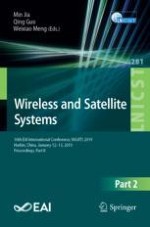This two-volume set LNICST 280-281 constitutes the post-conference proceedings of the 10th EAI International Conference on Wireless and Satellite Services, WiSATS 2019, held in Harbin, China, in January 2019. The conference was formerly known as the International Conference on Personal Satellite Services (PSATS) mainly covering topics in the satellite domain.
The 137 full papers were carefully reviewed and selected from 289 submissions. The papers are organized in topical sections on machine learning for satellite-terrestrial networks, human-machine interactive sensing, monitoring, and communications, integrated space and onboard networks, intelligent signal processing, wireless communications and networks, vehicular communications and networks, intelligent 5G communication and digital image processing technology, security, reliability and resilience in internet of things, advances in communications and computing for internet of things.
